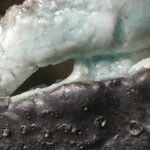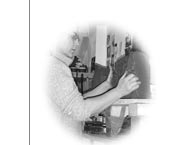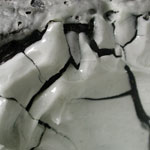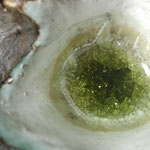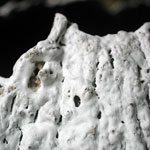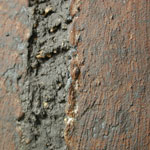
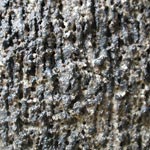
Inspiration
I seek to establish a rhythm between shadow and light, emptiness and fullness, light and dark, rough and smooth. The richness of materials that I encounter (pieces of wall, trees, rock, volcano, stone, metal, snow, water) all inspire my creative researches. To create a piece, the close relationship to my environment, my culture and my life experiences, inasmuch as they open me to the world are very important. Every sculpture, every moment shared with a sculpture, transports me towards something else towards another creation, another reflexion.
For this reason, each sculpture is unique. It all belongs and defines a precise and special moment of my existence. Each one represents a step of my life. A strong emotion is released and the spectator becomes complicit. The sculpture only takes on life through the gaze of another…this, is the ultimate recognition.
Awakening the truth in ceramics
by Raphaël Monticelli (writer, art critic)
translate by Anne Charvolen
We call it “clay work”, and we include in this term the long work nature does on herself, the work she does on and in each of us, and the work we do with her, in her, on her. We also say “the body’s work”. A body returning to clay, pitting its strength against it, devoting itself to it, tangling with it, striking it, looking to burrow under it, as though returning in a dream to the primal matrix.
We also say “ceramic”, and we know this is another older - ancient - word for “clay”. We say “ceramic” not only to apply our technical knowledge, but as a vehicle for a process of questioning. This is the least we can say about the way some artists today handle this geological, historical element.
As a ceramic sculptor, Karine Benvenuti resolutely forges her work in the problematic of the art of our time. She keeps the essential aspects of ceramics in mind: matter, gesture, and more generally the movements and action of the body at work, color – that of the clay and that of the colors used, although reduced to a minimum – and the control of fire. Keeping to the essentials, rather more a question of disposing of the anecdotic aspects, the pleasant, the seductive, the immediately useful. Keeping to the essentials in order to re-define, or re-found, ceramics. Keeping to the essentials, as if to attain a time and place, the utopia of an origin.
Karine Benvenuti’s ceramic work is that of a time before the pottery wheel, a working on mass, or elaborating mass, searching for what came before form, for that “genetic” instant where a form begins to appear where there seemed to be none. Ceramics – clay – as a place where forms originate, a territory of archetypes.
Karine Benvenuti’s pieces keep no “trace” of the body’s action. Each piece is the final, definitely accurate form of a dream of harmony, and this form is successful when it reflects the image of a desire to us, when it reveals both the frustration of quenching this desire and the permanence of it.
Karine Benvenuti openly declares her attachments and references. Tapiès, Soulages, Chilida, Rothko, Casanovas, Debril, Champy, Dejonghe. This is an artistic environment involving a freedom in procedure, a questioning of classifications, genres, rules and norms, and precision in the development of the approaches, of coherence.
Karine Benvenuti’s pieces don’t simply catch your eye, they strike it. The “found stones”, suiseki, an art in the Far East, revealing themselves to the attentive stroller, or perhaps those at the origin of the Aboriginal churingas. They hold that improbable obvious fact of nature which attention, work or meditation can charge with humanity and culture to assist us along the paths of our travels.
Crédit photos : Olivier Planchon
